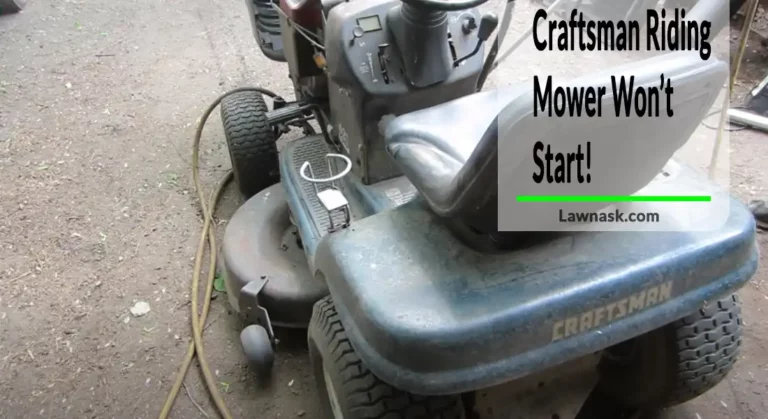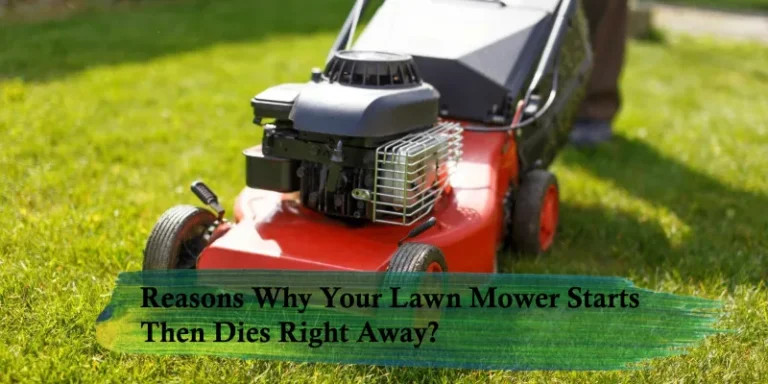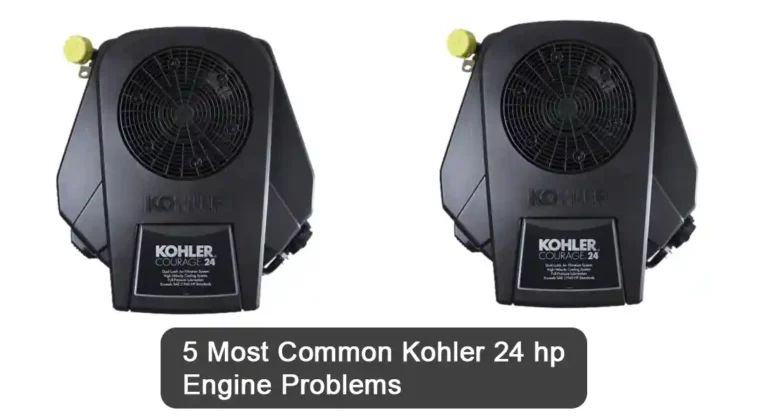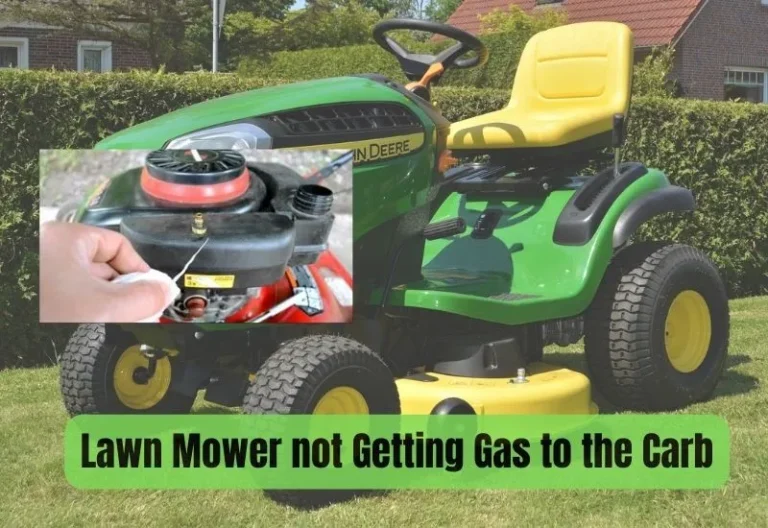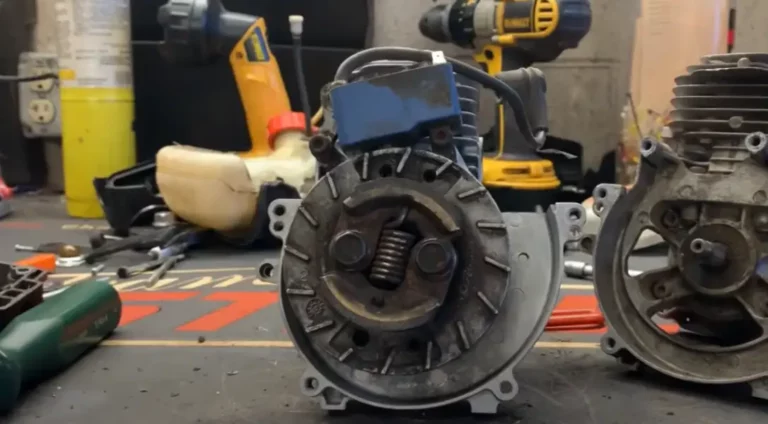Is Your Lawn Mower Rattling or Sound Weird? Check The Fixes Here
Rattling is one of the most common sounds a lawnmower makes. If the lawnmower is rattling, it may have a part that could detach at any moment. Thus, you likely want to know why your lawnmower is making noise and how to fix it.
The most common causes of Lawn Mower Rattling are loose bolts and nuts, damaged or worn-out blades, a broken muffler, old engine oil, a clogged air filter, and debris lodged in the mower deck.
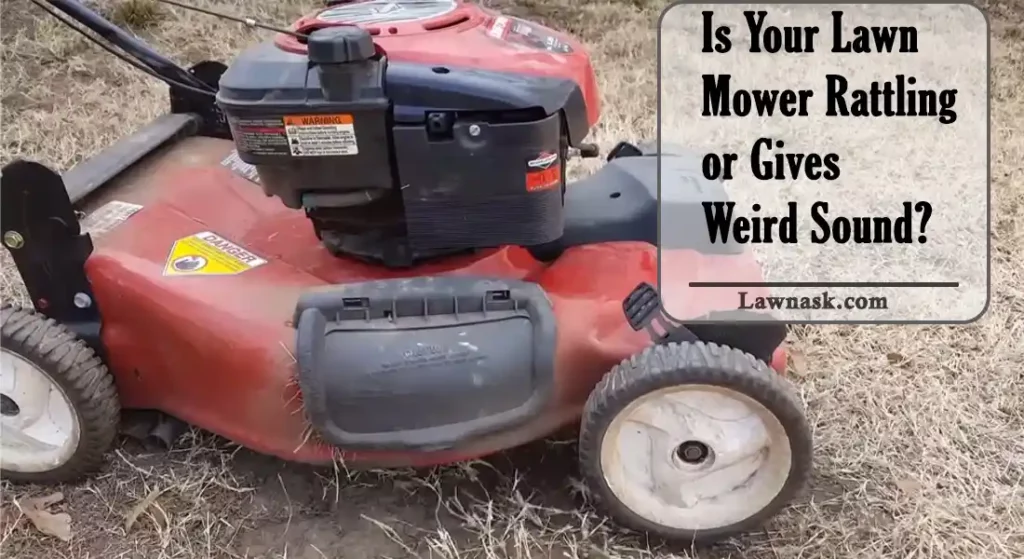
What Causes Lawnmower Rattling?
| Causes of Lawnmower Rattling | Solutions |
| Loosen Bolts and Nuts Due to vibration | Tighten the bolts with a socket or wrench. Use lock washers or thread-locking compounds. Replace the damaged or worn-out bolts and nuts. |
| Damaged Blade Bent blade Unbalanced blade Loose blade assembly | Replace the bent blade. Use a balancer to fix the unbalanced blade. Tighten the bolt that holds the blade. |
| Damaged Muffler Small holes or cracks on the muffler Broken muffler | Use patching materials or muffler repairing tape. Replace the muffler. |
| Contaminated or Damaged Engine Oil | Replace with the fresh and suitable oil. |
| Clogged Air Filter | Clean the filter with a brush, scraping tool, or compressed air. Replace the worn-out air filter. |
| Debris in Mower Deck | Avoid rough terrain. Adjust mower deck height. Clean the deck after using each time. |
Lawn Mower Rattling: 6 Things to Check
Some major causes of lawnmower rattling and their respective solutions are given below.
1. Loosen Bolts and Nuts
Loosen bolts and nuts are the most likely reason why the lawnmower is rattling.
Over time, the vibrations produced by the mower could loosen the bolts, nuts, and screws that hold the mower together. This causes the mower’s parts to bang against each other.
Periodically, especially after extended use, inspect various components including the blade deck and engine for any visible sign of looseness for movement. If you don’t know which bolts or screws are loose, go over all of them and tighten the loose ones.
Use a wrench or socket to tighten those bolts and nuts. Ensure the correct torque, specified by the user manual to prevent under-tightening or over-tightening.
Damaged or worn bolts, nuts, and screws must be replaced. You may also use lock washers or thread-locking compounds to keep bolts and nuts from coming loose.
2. Damaged Blade
A lawnmower blade may be bent, become unbalanced, or the blade assembly may become loose, causing the lawnmower to rattle.
Bent Blade
Lawnmower blade could be bent or chipped upon contact with hard objects. A bent blade in contact with the skid plate causes rattling.
The blade is installed in the gap between the cutting disc and skid plate. When the disc rotates, an unsecured the skid plate due to a damaged skid plate cover applies vertical pressure on the blade. This causes the blade to be bent.
The worn-out or bent blades must be replaced with new ones. The skid plate cover should also be checked for replacement.
Unbalanced Blade
Lawnmower may rattle because of one side of the blade may be lighter than the other.
Use a lawnmower blade balancer to fix the unbalanced blade.
Loose Blade Assembly
Loose Blade Assembly causes the blade to vibrate and move in an uneven manner, thus making contact with other parts of the lawnmower.
The blade adapter that connects the blade to the engine’s output shaft may also become loose or damaged, causing vibration and rattling.
To fix a loose blade assembly, take the following steps.
Step-1: Disconnect the spark plug
Prevent the accidental start-up of the lawnmower by disconnecting it from the power source.
Step-2: Tighten the bolt
Tighten the bolt that holds the blade. When tightening, you can use a piece of wood to prevent the blade from turning.
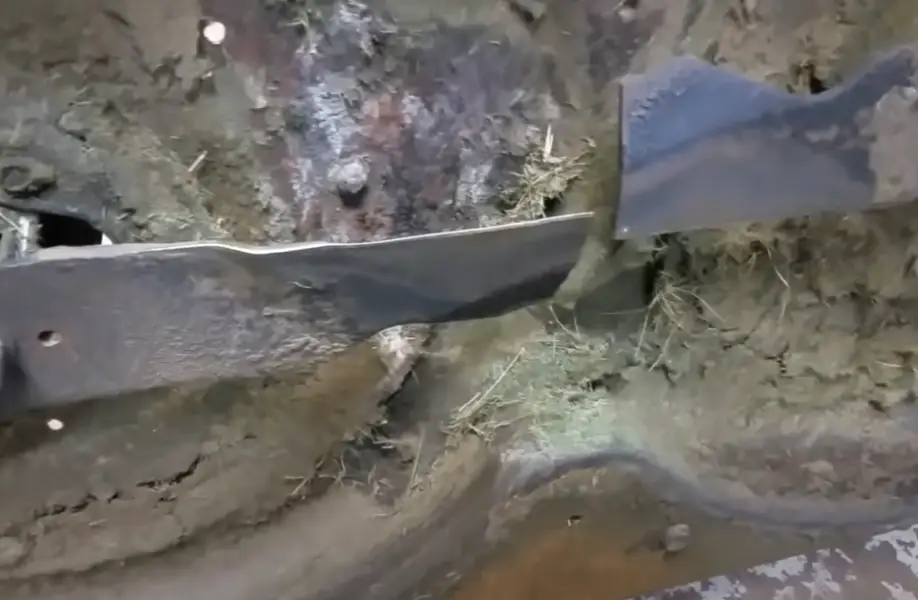
Read Also: What Is A Mower Blade Balancer Used For?
3. Damaged Muffler
A muffler is used to reduce the sound of the engine exhaust by a lot. A broken muffler might have holes or cracks that can be seen with the naked eye, or it might not fit right on the engine outlet.
If the muffler is broken, it may not work well with the engine. The gap lets engine noise and vibrations escape, making a rattling sound.
Again, a broken muffler can mess up the flow of air and the pressure inside the engine. This makes the engine shake more and make a rattling sound.
Depending upon the extent of the damage, you may decide whether to replace or repair the muffler. Moreover, it’s recommended to replace the damaged muffler with a new one since they are not too expensive.
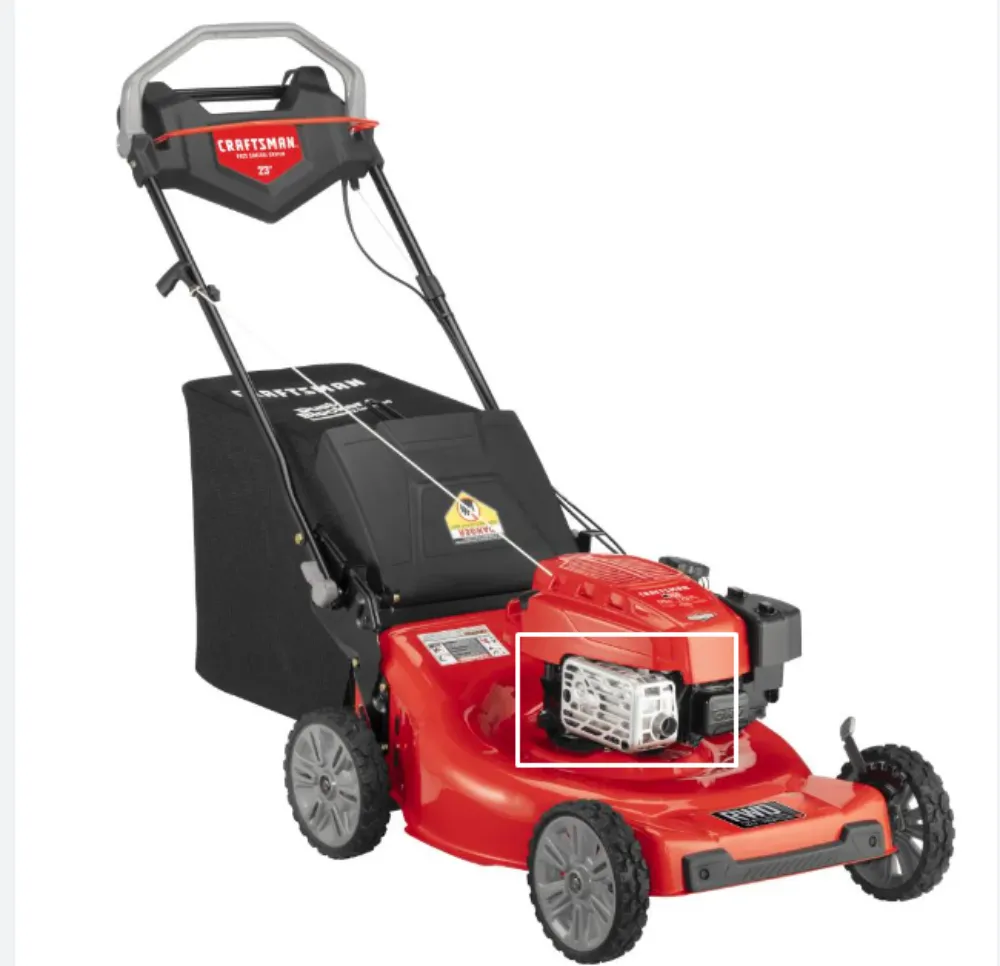
It can be done in a few easy steps-
Step-1: Cool down the engine
Make sure the engine is not hot. It is wise to wait for some hours before replacing the muffler. It’s recommended to use a pair of gloves for protection.
Step-2: Locate the muffler
Mostly, mufflers are located on the side or rear of the engine. Typically, they are attached to the end of an exhaust pipe. Unscrew the exhaust pipe to remove the muffler entirely. You may need a pipe wrench to unstick the rusted muffler.
Step-3: Repair or replace the muffler
If the muffler has minor cracks or tiny holes, it can be repaired using patching materials or muffler repairing tape like FiberFix.
On the other hand, severely damaged or rusted mufflers must be replaced with a new one. Install the muffler by putting the threaded end into the engine’s exhaust outlet and spinning it clockwise to tighten.
4. Contaminated or Damaged Engine Oil
Engine oil works as a lubricant between moving parts of the lawnmower engine and prevents the parts to rub against each other.
Over time, oil becomes degraded or contaminated with debris, dirt, or water and can no longer perform the intended work.
The engine requires to change the oil every 30 to 40 hours of use or twice a year. Use the following troubleshooting steps to change the oil-
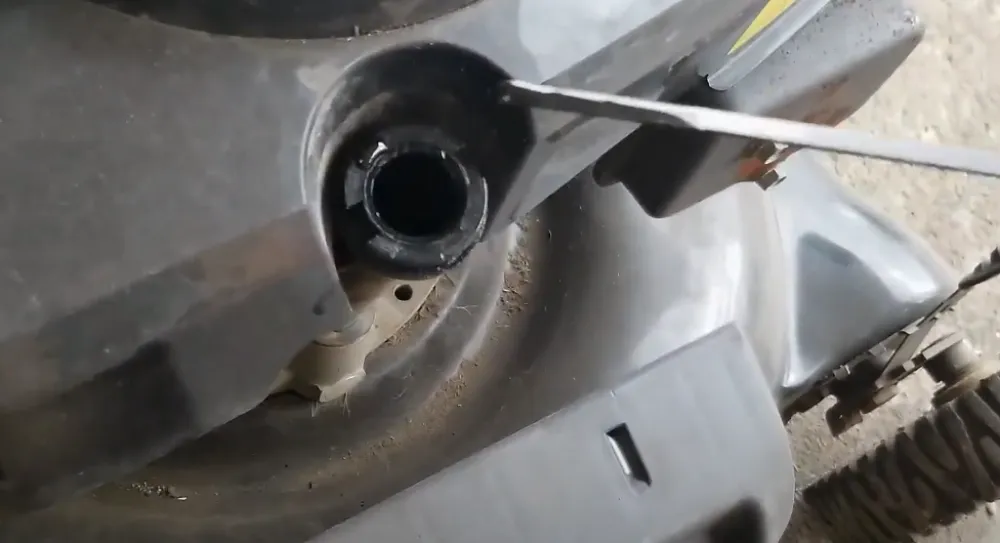
Step-1: Start the lawnmower
It is important to warm the oil for warm oil flows easily.
Step-2: Drain the old oil
Remove the drain plug which is located near the bottom of the engine and drain out the old oil completely in a container.
Step-3: Add fresh oil
Fill the oil tube at the optimum level with the recommended type of oil.
5. Clogged Air Filter
The air filter works as a barrier to prevent debris, dirt, and dust from entering the engine and allows only clean air to enter.
Over time, the filter fills with those dust or debris and becomes clogged. This blocks the airflow to the engine and causes rattling.
You can clean or replace the clogged air filter by following the easy steps given below.
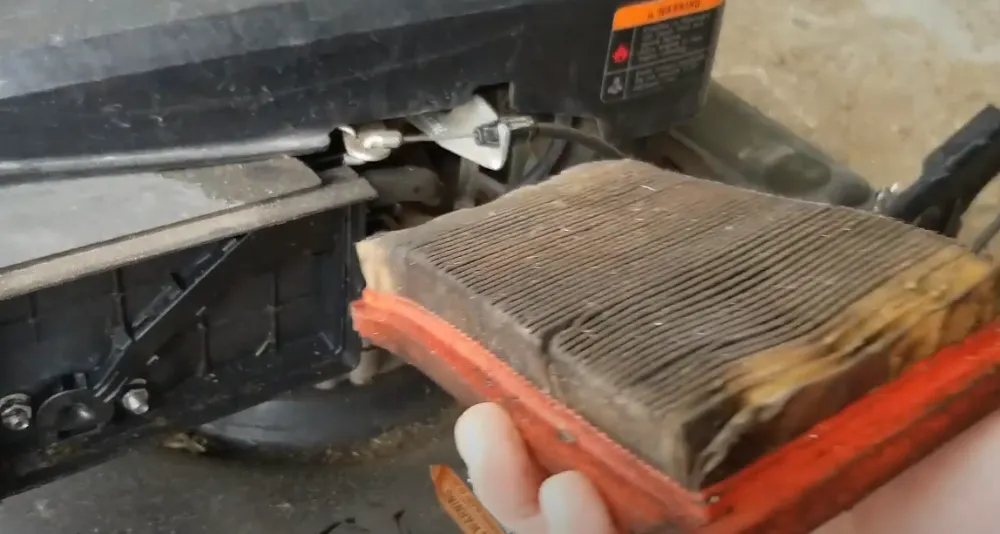
Step-1: Turn off the mower
Remove the spark plug wire to ensure safety.
Step-2: Locate the air filter
Mostly it is rectangular in shape and is located near the carburetor.
Step-3: Clean or replace the filter
Remove the air filter cover and tap on a hard surface to displace all the debris and clouds of dust. If the filter still looks dirty, use compressed air to blow it clean or brush the filter. The damaged filter must be replaced.
Step-4: Reinstall the air filter
Cover the filter and put it back in place.
Related Post: Lawn Mower Leaking Oil From Air Filter: Here’s How to Fix It!
6. Debris in the Mower Deck
Grass, clippings, stones, dirt, twigs, and other debris may build up underneath the mower deck gradually. Mowing on uneven or rough terrain causes more debris to trap in the deck. This debris stuck between the blade and the deck or vibrates against the deck, causing the lawnmower to rattle.
You should adjust the mower deck height and avoid mowing on rough terrain. You can follow the simple steps given below to clean the mower deck.
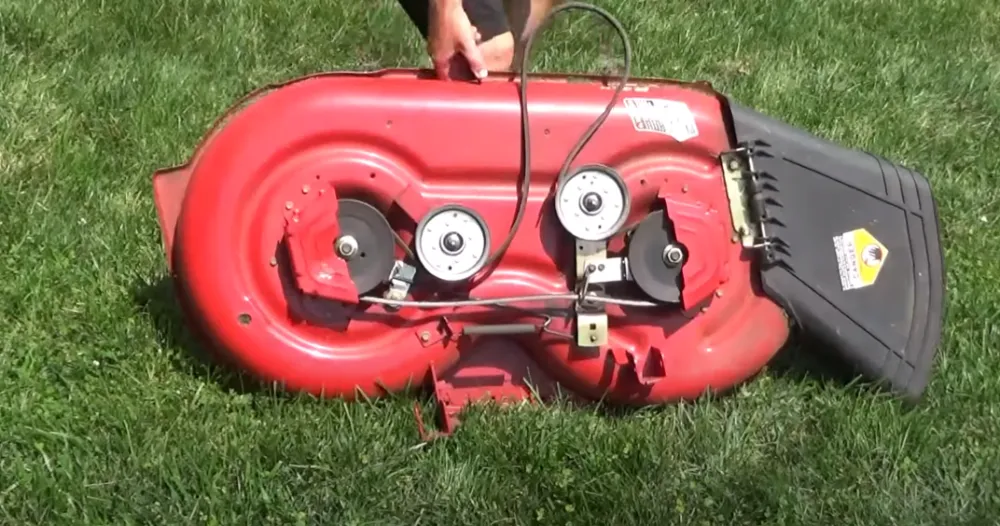
Step-1: Clean the mower deck
Unplug the wire and clean the deck with a stick, brush, scraping tool, or compressed air to blow out the debris. Use a power washer only if the user manual allows the use of water.
Step-2: Use WD-40 to the deck
After you have cleaned up the debris properly, apply some WD-40 which keeps the debris building up again.
Related Post: Loose Mower Deck Belt Symptoms! How to Fix It?
Frequently Asked Questions (FAQs)
Is it normal that my lawnmower is rattling?
Some shaking and rattling is normal for lawnmowers, but rattling that won’t stop needs to be fixed.
Can a rattling lawnmower operate effectively?
The lawnmower may still work well even if it rattles because of engine noise or vibration. But the mower won’t work as well if it rattles because a part is loose or there is debris in it.
Is it safe to operate a mower that is rattling?
Rattling noise from a lawnmower is a concerning issue that may cause an accident or damage your mower permanently if overlooked.
Do lawnmowers produce a rattling sound when cutting thicker grass?
Yes, a lawnmower may cause more rattling when cutting thicker grass, especially if the blade is dull or otherwise damaged. because cutting through thicker grass will require more work from the blade.
Read Also:
- Step-by-Step Guide to Repair Kohler Ignition Coil
- Troubleshooting Tips for a Non-Spinning Ryobi Mower Blade
- Troubleshooting Steps for a Stuck John Deere Mower Deck
- Troubleshooting Guide for John Deere Zero Turn with One Side Not Working
- Troubleshooting Tips for a Repeatedly Detaching Craftsman Mower Deck Belt

